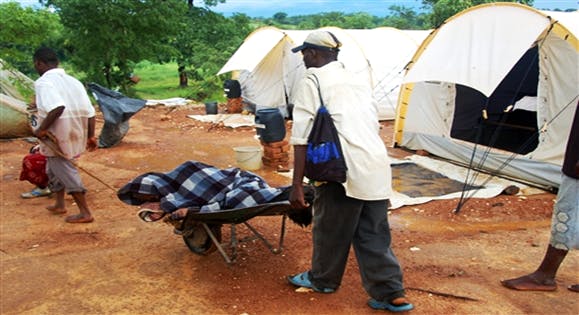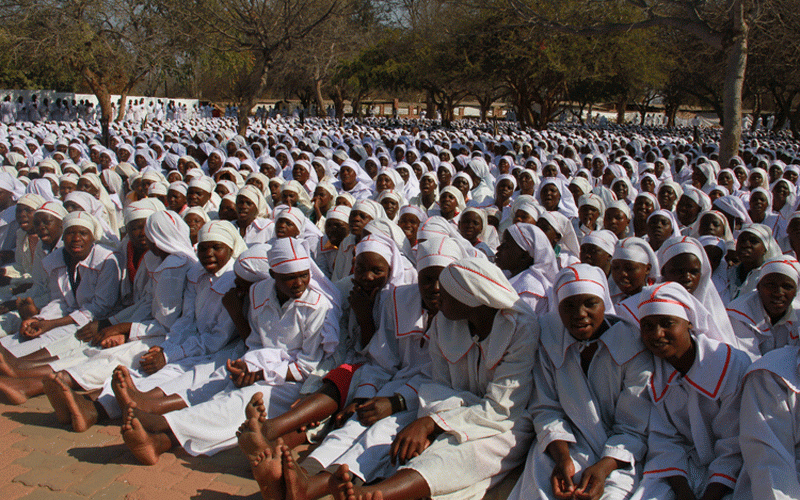The recurrence of waterborne diseases poses a global health threat, with Cholera being a significant concern. Vibrio cholerae, a gram-negative bacterium, causes this acute diarrheal illness transmitted via contaminated food or water. Despite long-standing prevention knowledge, Cholera continues to claim 21,000 to 143,000 lives annually worldwide. The disease's deadly impact stems from severe dehydration and electrolyte imbalances, triggering the excretory system's activation. Factors such as delayed treatment seeking, stigmatization, misinformation, and reliance on alternative remedies contribute to worsening outcomes. Recent cholera outbreaks in Zimbabwe, like in the Mashonaland West province, highlight challenges in containment, exacerbated by religious gatherings' resistance to medical interventions and vaccines. Controlling cholera demands early intervention, improved surveillance, and overcoming community barriers to treatment.
/
Genomic studies in Bangladesh and Malawi shed light on cholera outbreaks' molecular aspects. In Dhaka, the 2022 outbreak's genetic analysis tied the strain to the 7th pandemic El Tor sublineage BD-1.2, showing a lineage shift and serotype switch possibly driving increased cases. In Malawi, Chaguza's research pointed to imported ctxB7 O1 strains and environmental factors fueling the epidemic, reflecting the complex interplay of genetics and environment in cholera dynamics. Insights from South Africa highlighted the introduction of cholera strains from South Asia, emphasizing the global reach of the disease and the critical role of genomic surveillance in tracking its spread.
Research disparities between high and low-income countries underscore the need for enhanced local research capacity and funding support. Policy-makers and emergency response teams could benefit from increased investment, aiding in setting priorities and facilitating in-depth studies in cholera hotspots across the WHO African region. Additionally, combating antibiotic misuse in cholera treatment is crucial, as reliance on inappropriate antibiotics like Azithromycin and Amoxicillin poses risks of antimicrobial resistance. Proper hydration remains the cornerstone of cholera therapy, highlighting the importance of timely rehydration with oral or intravenous solutions over unnecessary antibiotic usage. This approach not only ensures effective treatment but also mitigates the escalating threat of antimicrobial resistance in combating cholera outbreaks.
Addressing the challenges of cholera surveillance and outbreak response is essential for effective public health interventions. Members selected to lead Risk Communication and Community Engagement (RCCE) initiatives play a crucial role in disseminating health information and engaging communities in preventive measures. However, significant hurdles remain in maintaining effective surveillance due to the high costs associated with laboratory testing and resources necessary to detect virulence factors and quantify the cholera burden accurately.
The burden of diarrheal diseases globally is immense, with 1.7 to 5 billion cases reported annually, caused by various pathogens such as Salmonella and Vibrio Cholerae. Distinguishing cholera cases from other diarrheal illnesses requires testing stool samples, emphasizing the importance of accurate diagnostic protocols. The World Health Organization (WHO) outlines specific case definitions for suspected and confirmed cholera cases, guiding surveillance and outbreak response strategies for timely interventions.
Moreover, the lack of adequate bioinformatics and genomics research hinders the monitoring of cholera virulence factors and antimicrobial resistance trends critical for epidemic intelligence. While some studies like those by Son et al. , 2011, have delved into the genetic analysis of cholera strains in Bangladesh and Haiti, comprehensive research on strain evolution and relatedness to circulating strains in different regions, including those adjacent to the WHO African region, is essential but presently lacking. Addressing these research gaps is crucial for enhancing epidemic preparedness and response capabilities to prevent recurring cholera outbreaks effectively.
Selective chemoprophylaxis, although not generally recommended, may be considered for high-risk individuals like pregnant women, severely ill patients, and those in rapid transmission settings such as mental hospitals and refugee camps. The goal is to reduce the shedding of V. cholerae and thereby decrease case numbers, particularly in challenging environments where disease management is limited.
Disaster preparedness is often overlooked, as highlighted by instances where basic necessities like clean water and safe sanitation facilities are lacking, leading to cholera outbreaks. Asymptomatic carriers of V. cholerae contribute to its spread, with only a portion of infected individuals showing symptoms. This underreporting and poor surveillance compounded by factors like unregulated street vendors, inadequate enforcement of health regulations, and environmental conditions favoring disease transmission create significant challenges for containment.
Addressing these challenges requires a multifaceted approach involving sustained collaboration among stakeholders, political commitment, and increased investment in Water, Sanitation, and Hygiene (WASH) infrastructure. Community engagement plays a crucial role in promoting preventive measures and reinforcing health-seeking behaviors for early intervention. Empowering communities with knowledge on vaccination, antimicrobial stewardship, and transmission precautions can significantly reduce cholera-related morbidity and mortality rates, emphasizing the importance of public health education and evidence-based interventions in combating cholera outbreaks effectively.

Tags:#articles
